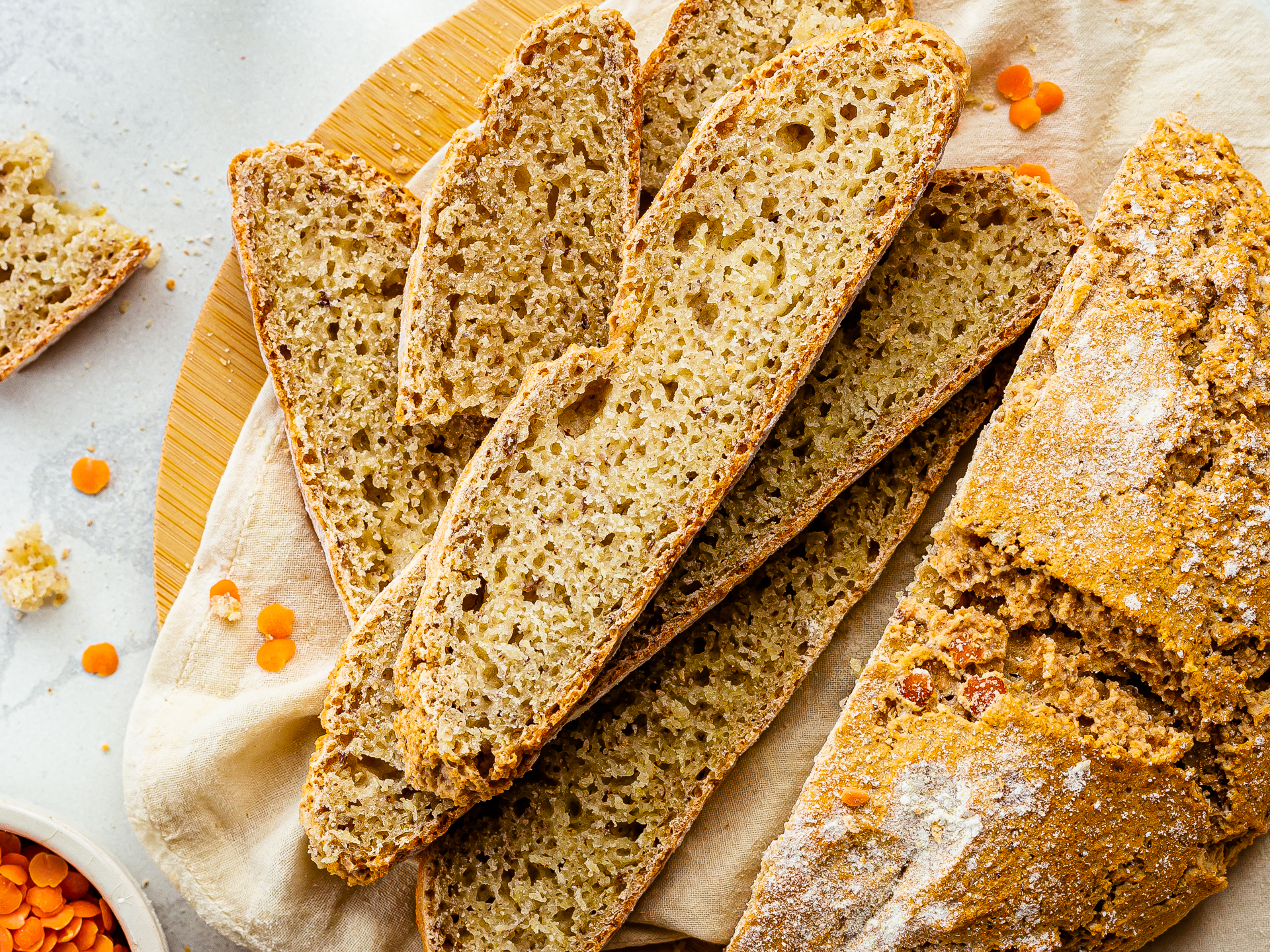Today, we'll show you how to make lentil bread, a crusty gluten-free loaf with the added health benefits of red lentils. And it tastes deliciously nutty!
This fun and easy recipe helps you prepare flourless bread with more protein and fibres, which are often lacking in gluten-free bakes.
To use lentils in bread, we'll soak the dry, raw lentils first and then blend them into a paste before incorporating them into the yeasted bread dough.
The bread dough is prepared with a base of plain gluten-free flour, a blend easy to find in the free-from section of your supermarket.
We'll also use flaxseeds to help bring the lentil dough together.
Soaked in water, these ground seeds form a gel that works as an excellent thickener and binder for gluten-free bread. If you're looking for substitutions, check out our FAQs!
But the real magic of this lentil bread is in its crunchy crust, just like that of artisanal bread. And we'll tell you exactly how to get it in the recipe steps below!
Do you need lentil flour for lentil bread?
You can make lentil bread using dry lentils, not lentil flour.
Lentil flour is quite expensive and hard to find, and making it from scratch at home is time-consuming.
Raw lentils, instead, are cheap, readily available, and super easy to add to your gluten-free loaf.
Which lentils are best for lentil bread?
To make bread using dry lentils, red split lentils work best.
Red lentils have their husk removed, meaning that:
They’re softer than whole lentils like green or brown lentils
They’re easier to blend into a puree and incorporate into the gluten-free bread dough
They cook more quickly so you won’t have that ‘raw’ bean taste in your lentil loaf
They'll give a lovely orange-red colour to your bread
Can you make gluten-free lentil bread with flaxseeds?
Yes, we successfully made our gluten-free lentil bread with flaxseeds, soaking them in water until jelly-like to help thicken and bind the flourless dough.
Psyllium husk is a popular and effective thickener used in gluten-free bread, but flaxseeds work too.
As an alternative to flaxseeds, you can also use:
Chia seeds, 2 tablespoons
Eggs, 2 egg whites and remove 4 tablespoons of water
Psyllium husk powder, 2 tablespoons
Ingredients
| Dry Red Lentils | 50 g |
| Ground Flaxseeds | 2 tbsp |
| Active Dry Yeast | 7 g |
| Sugar | 2 tsp |
| Water | 200 mL |
| Salt | 1 tsp |
| Gluten-Free Plain White Flour | 300 g |
Step 1
Rinse the dry red lentils a few times until the water runs clear, then leave them to soak in a bowl of water to soften for at least 1 hour — ideally 2-3 hours or overnight (1).
In a small bowl, combine ground flaxseeds with 80 mL of water and let them soak and thicken into a gel-like mixture for 1 hour — you can leave them overnight too (2).
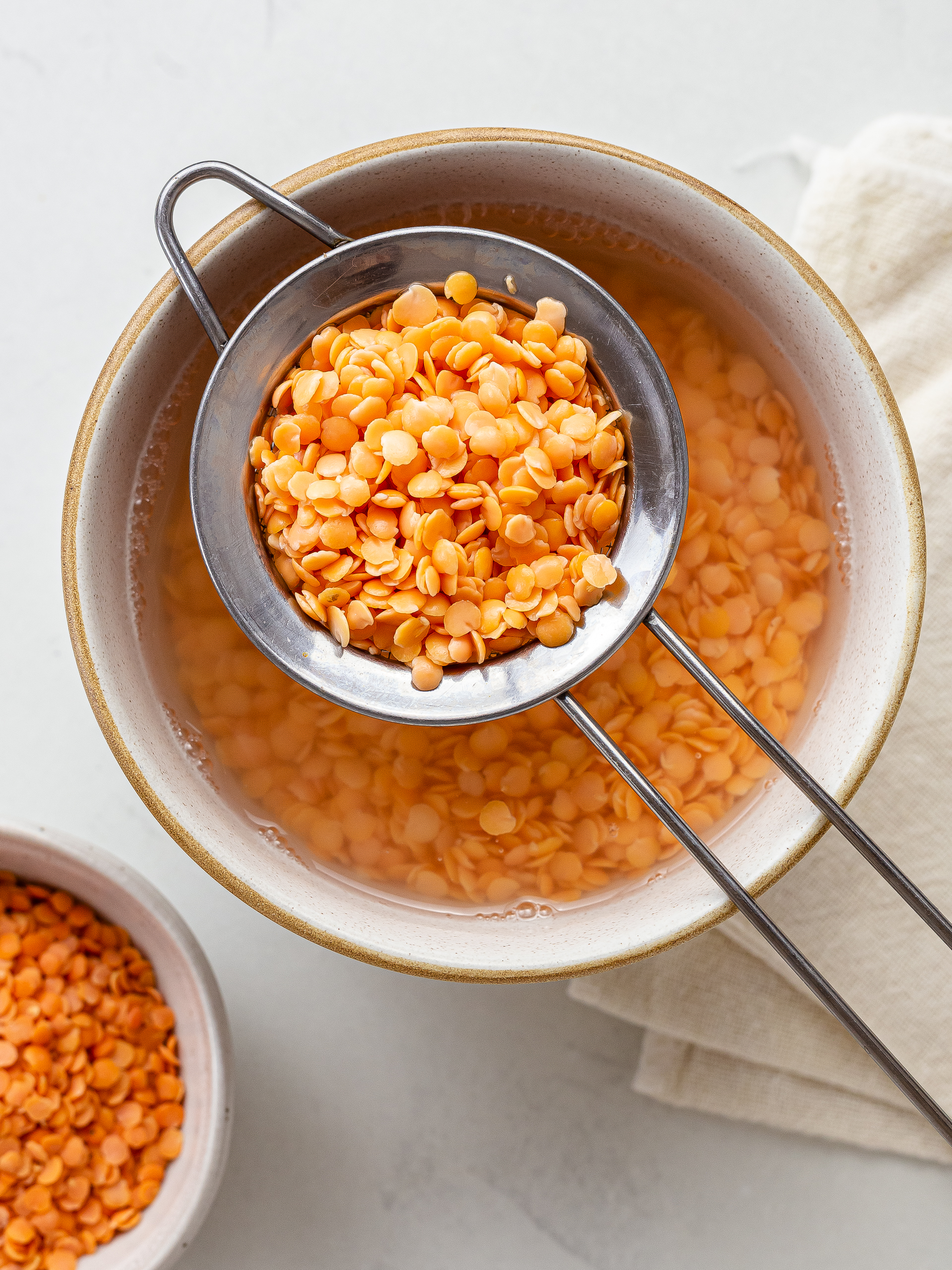
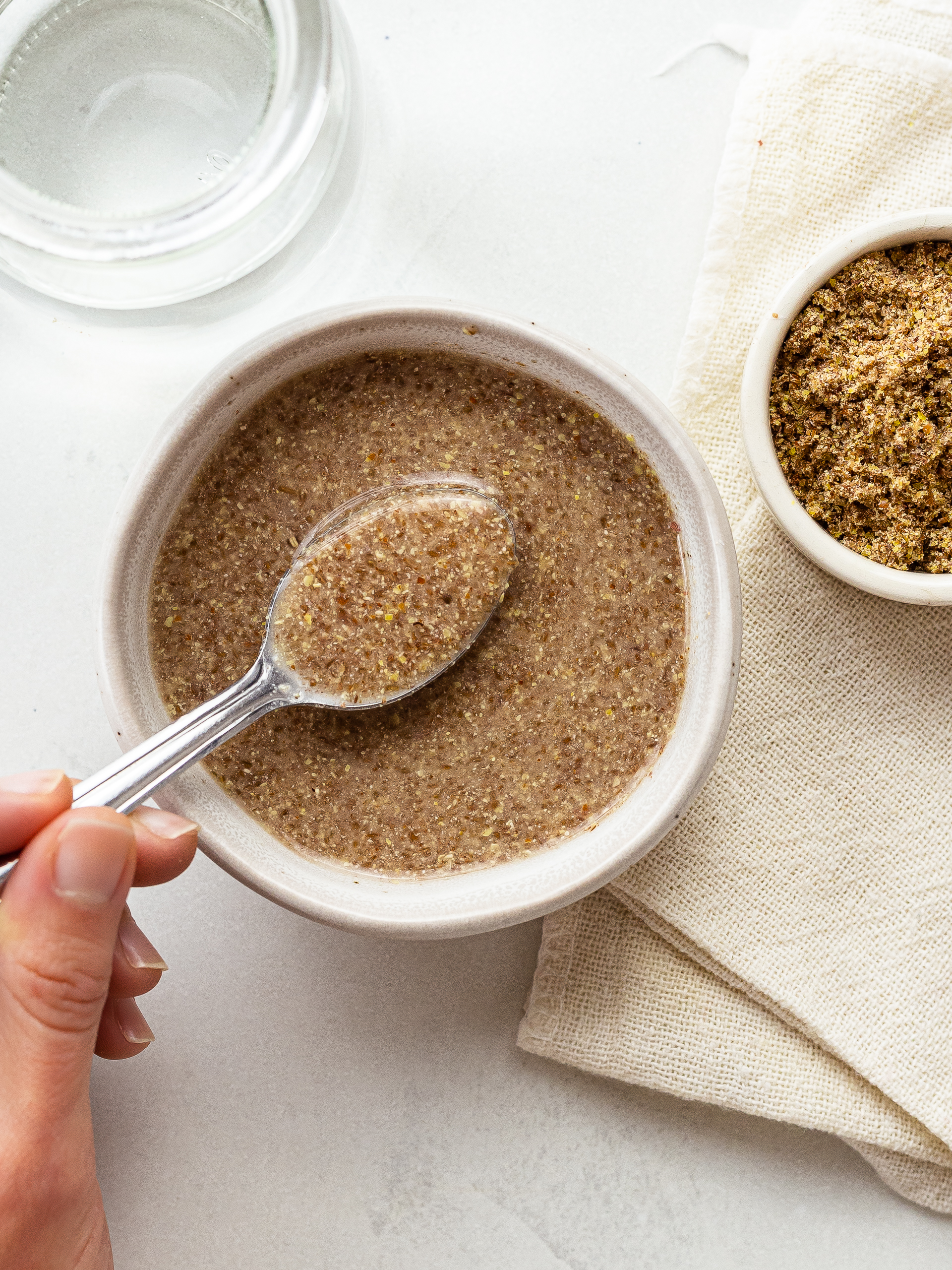
Step 2
Once the lentils and flaxseeds have soaked long enough and are ready to use, start blooming (activating) the yeast.
Add 80 mL of warm water (ideally 35-40°C / 95-105°F) to a small bowl, stir in the sugar, and dissolve the yeast.
Let it sit for 10-15 minutes until the mixture is frothy and bubbly.
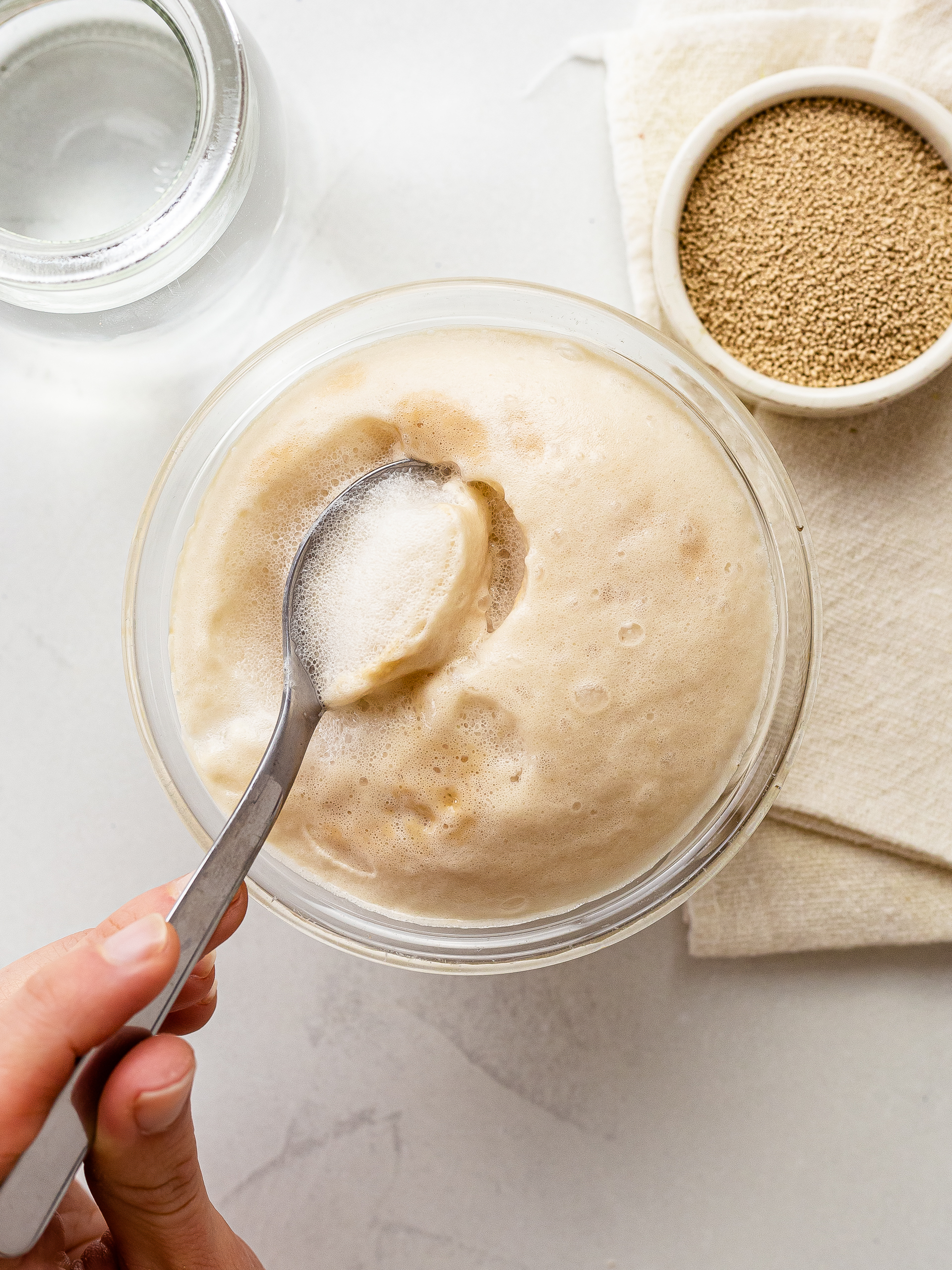
Step 3
Rinse the lentils to wash off the soaking water and drain any excess water using a sieve/colander.
Blend the red lentils in a food processor with salt and 40 mL of water until very smooth and creamy.
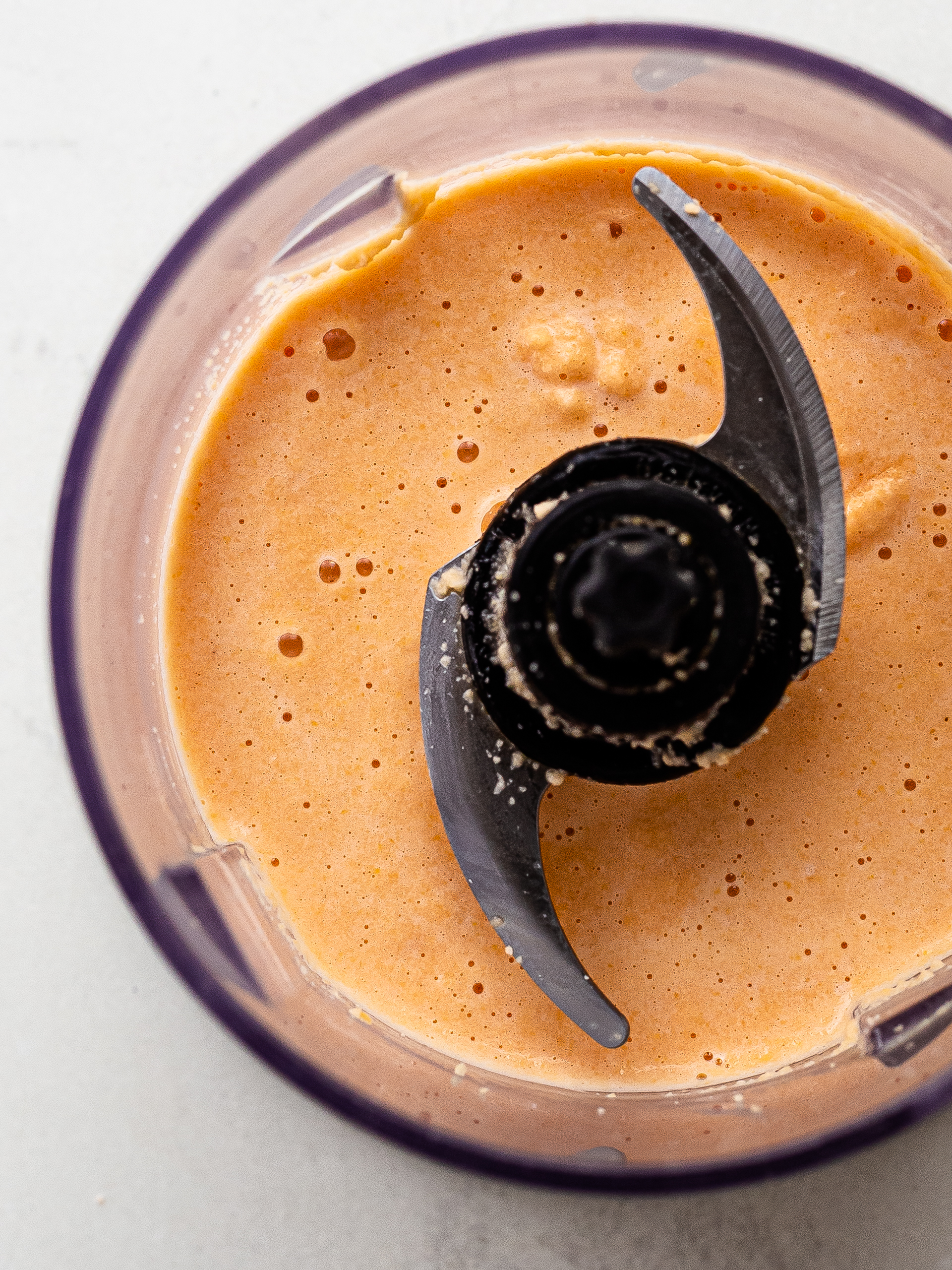
Step 4
Now, add the gluten-free flour to a bowl and tip in the blended lentils, yeast mixture, and flaxseed gel (1).
Stir to combine, then work the ingredients with your hands until the ingredients come together into a smooth and pliable dough (2).
The lentil bread dough will be softer and stickier, less stretchy and kneadable than wheat bread dough — that's normal as there's no gluten.
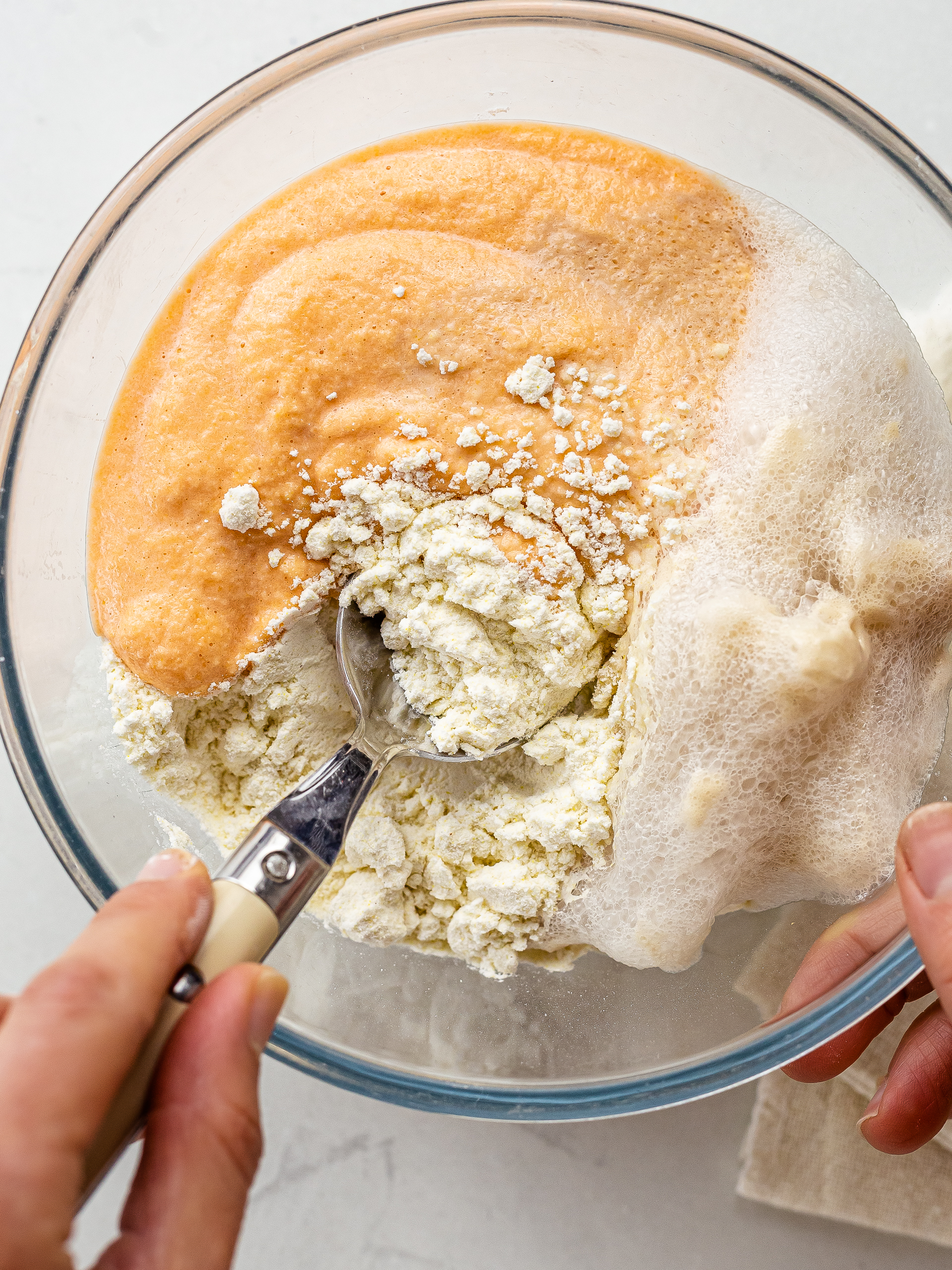
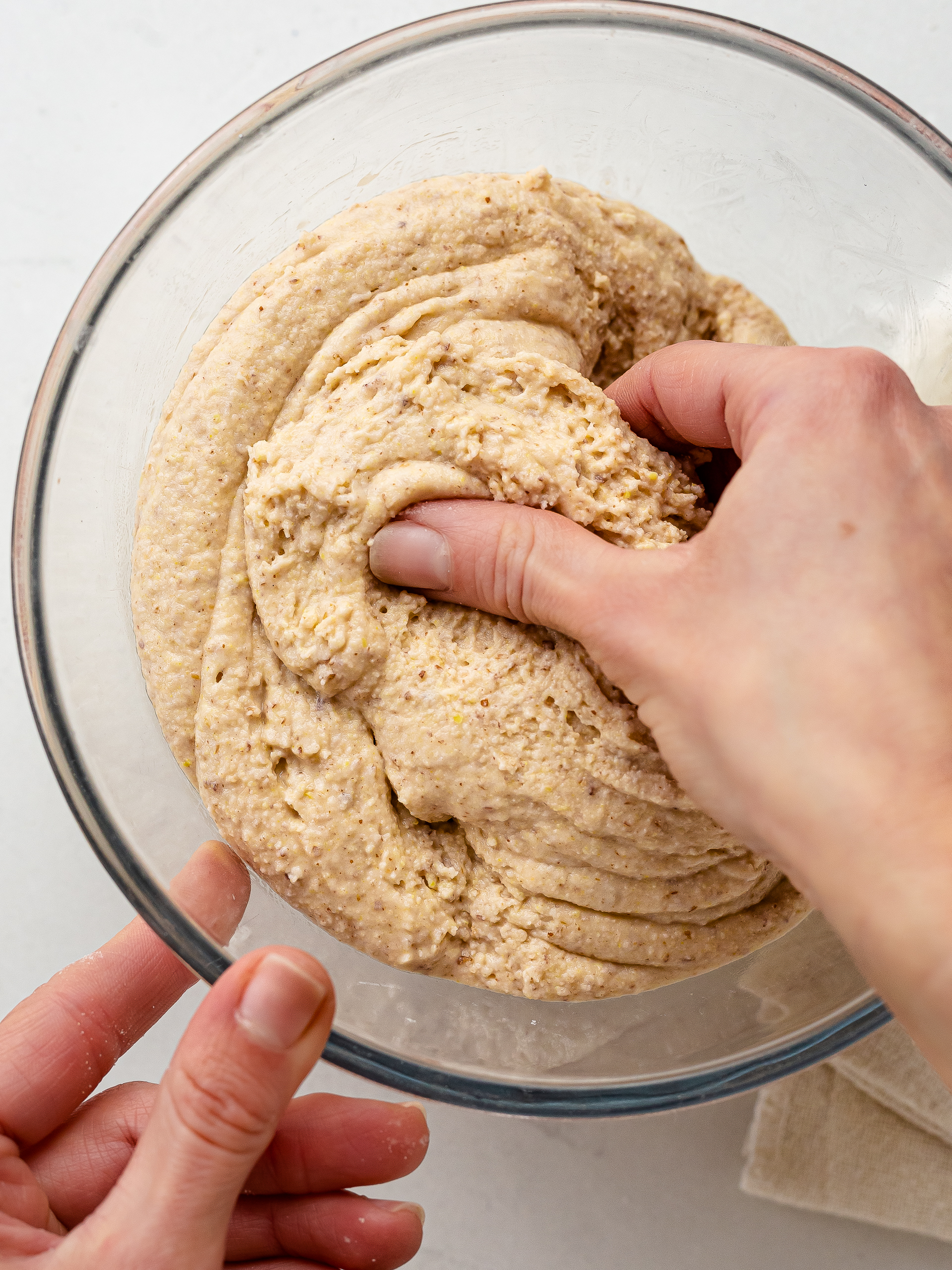
Step 5
Now, we strongly recommend you make two small loaves, rather than a single big loaf.
That will help the lentil bread dough rise better when proving and baking, yielding a lighter, less dense loaf.
Use two cereal bowls for proving, thoroughly greased and floured to prevent the dough from sticking.
Divide the dough into two equal portions, smooth them into a ball and ease them into the prepared bowls.
Cover with cling film and leave the dough to prove in a warm, draft-free place until almost doubled in size, about 30-45 minutes.
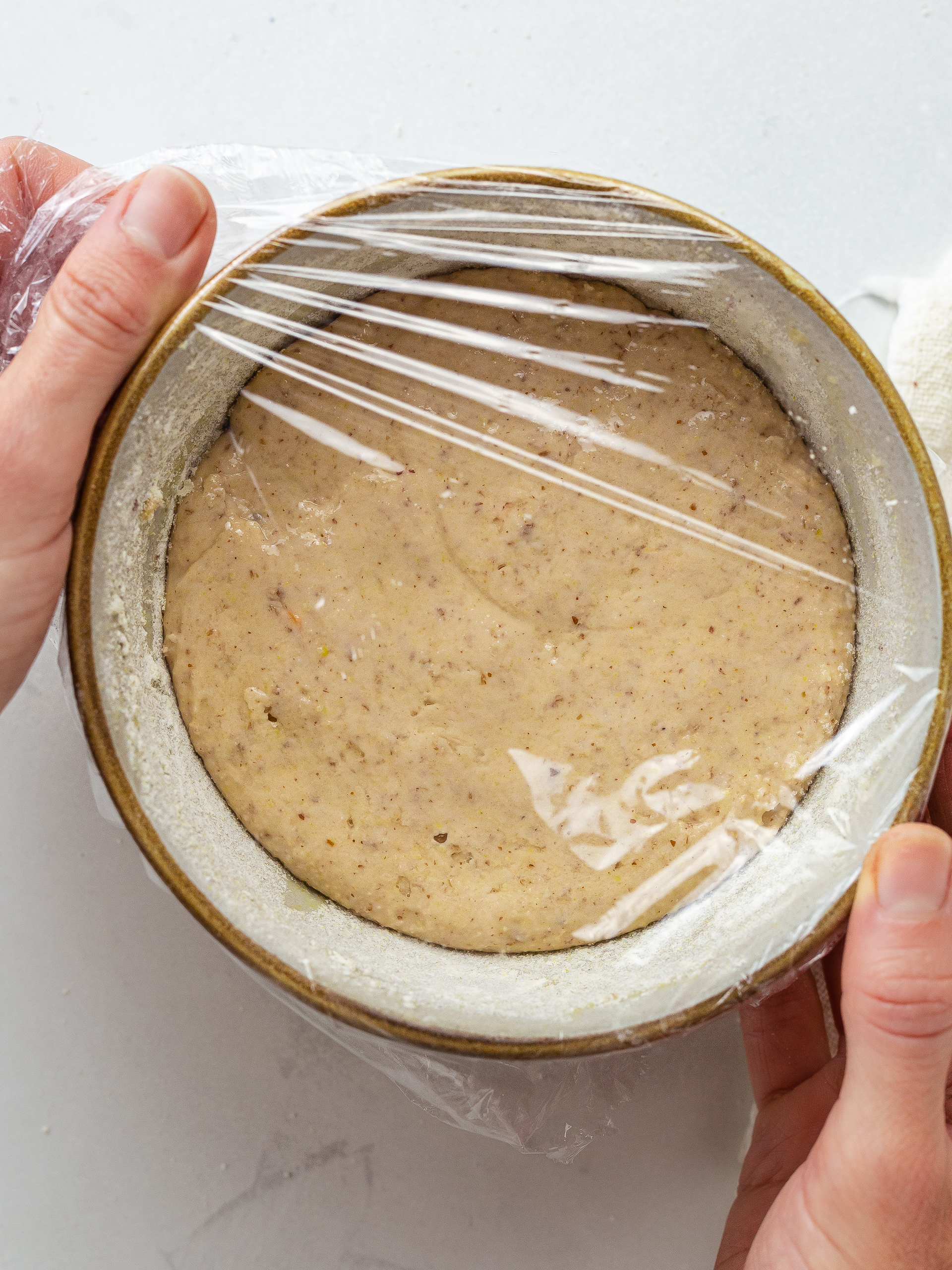
Step 6
Preheat the oven to 220°C (430°F) for 15 minutes.
Keep a flat baking tray lined with baking paper inside the oven to warm up.
For a crusty bread finish, you need steam in your oven while the bread bakes.
To do so, place a deep baking tray on the bottom shelf of the oven and let it heat up while you bring water to a boil in a kettle.
Take the top hot baking tray from the oven, dust it with flour and carefully flip the two loaves over (easing them out of the bowls with a spatula if needed).
Dust the loaves with some flour, score the dough with a knife, and return the baking tray to the oven.
Immediately pour the boiling water into the deep baking tray at the bottom (use a glove for safety) to release steam in the oven and quickly close the oven door.
Bake the lentil loaves for 35 minutes until they're golden and crusty outside, and sound hollow when tapped.
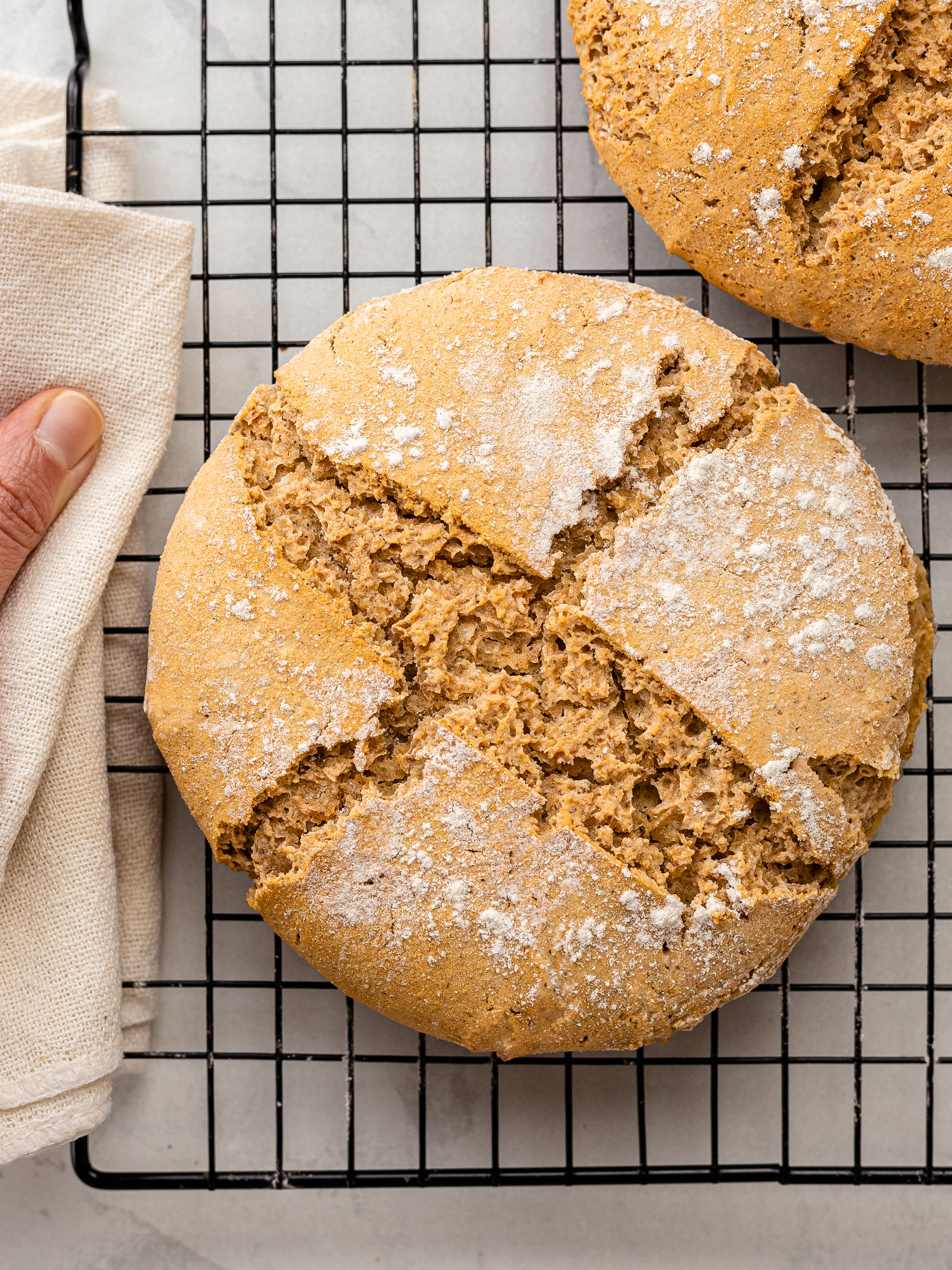
Step 7
Once baked, transfer the lentil bread loaves onto a rack and let them cool down completely.
Your delicious gluten-free bread with lentils is ready!
The bread is best enjoyed on the same day as it will be crusty outside and soft inside.
If eating over the following days, we recommend toasting the bread until crunchy.
Alternatively, you can freeze the sliced bread to store it for longer, up to 3 months. To eat, simply toast the slices in your toaster until crusty.
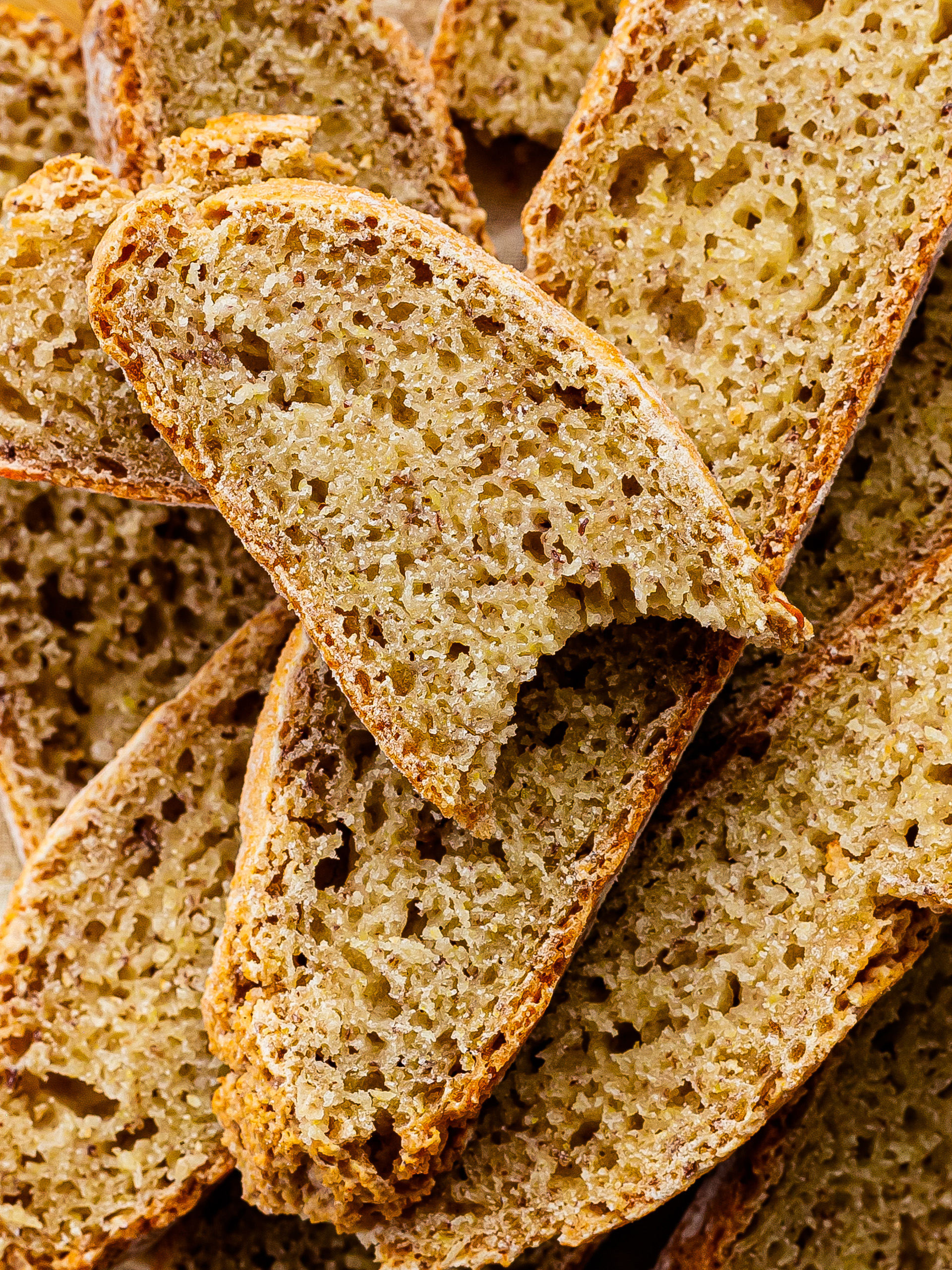
Tips
Our lentil loaf recipe uses active dry yeast. If you're using instant dry yeast instead, there's no need to let it bloom first: just add it to the flour in the bowl with the other ingredients.
To get the crunchiest artisan-style bread crust, use a bread cloche or Dutch oven if you have one: increase the oven temperature to 240°C (465°F) and bake for 45 minutes.
Like this recipe?
You can use soaked red lentils to make gluten-free lentil pancakes.
For more gluten-free bread recipes, check out our mochi flour bread rolls, quinoa gluten-free flatbread, gluten-free vegan brioche bread, and gluten-free chapati with chickpea flour.
